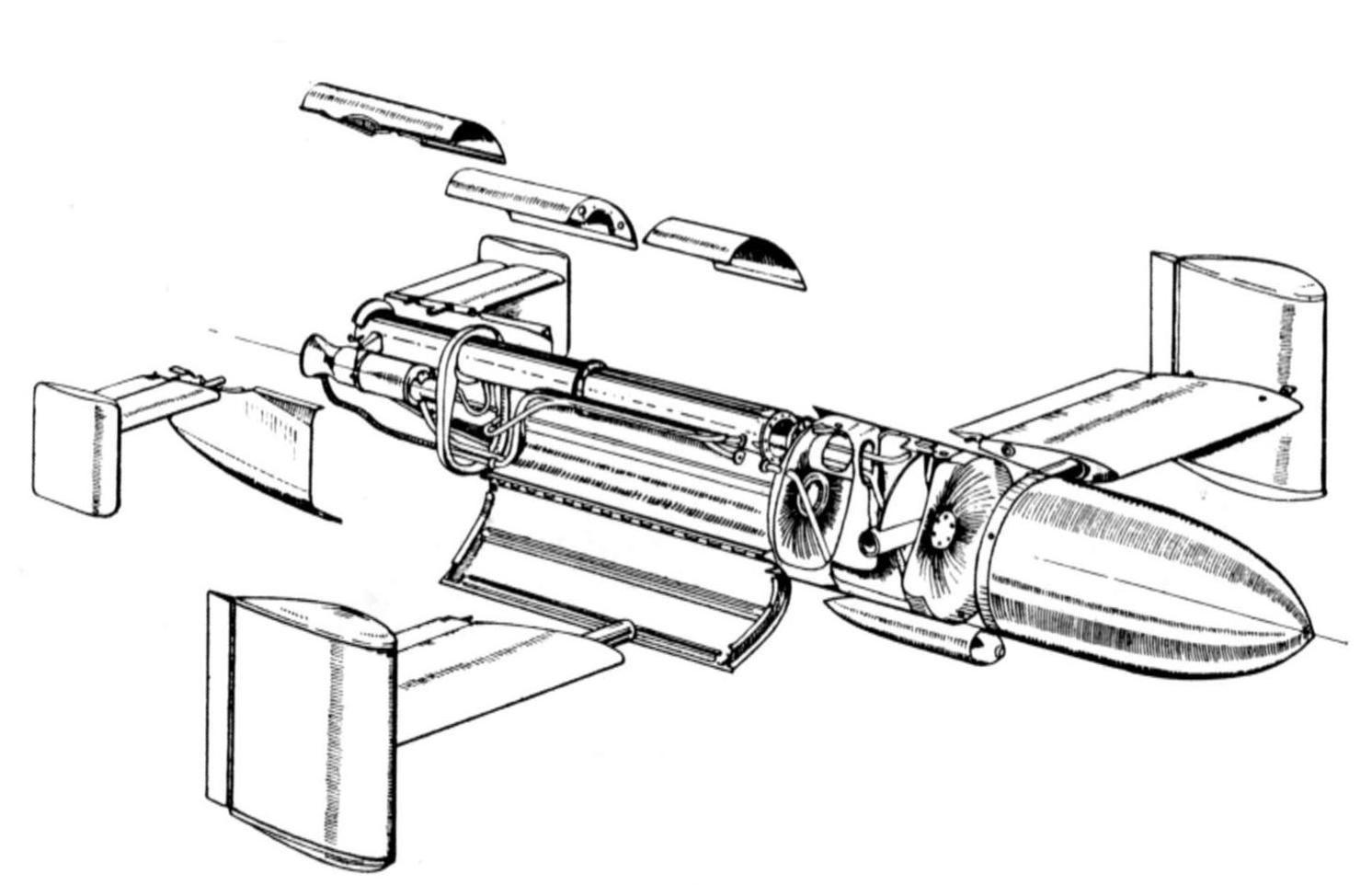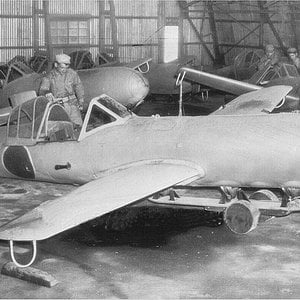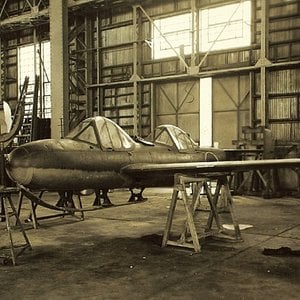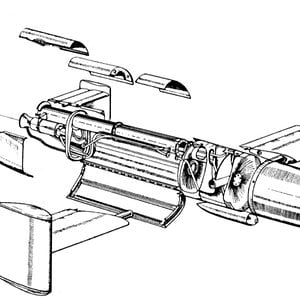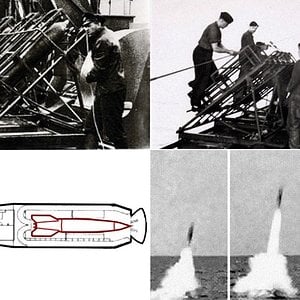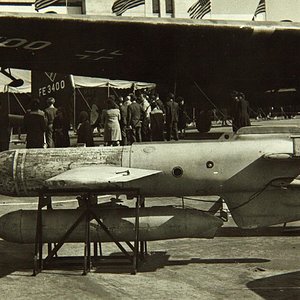Navigation
Install the app
How to install the app on iOS
Follow along with the video below to see how to install our site as a web app on your home screen.
Note: This feature may not be available in some browsers.
More options
Design
By 1941, Allied merchant ships were slow and easy targets for German coastal bombers, but were proving increasingly well-equipped with anti-aircraft artillery, making short-range attacks prohibitively costly. Interest was raised in the development of a stand off weapon to engage unarmored merchant ships from beyond the range of the Bofors 40 mm gun. The BV 143 was one of several stand off bomb and missile designs researched by the Blohm & Voss Naval Engineering Works for this anti-shipping role.
The Bv 143 was designed to be air-dropped from beyond the range of antiaircraft guns, glide towards the target, engage its solid rocket motor below the line of fire of guns, and commence a short (30 second, maximum) high speed dash to the target, striking 2 metres (6 ft 7 in) above the waterline. The first design, with straight wings and cross-like tail, featured a 2 meter instrumented "feeler probe" suspended from the body, designed to start the rocket on contacting the sea surface.A pitch-only autopilot then maintained the bomb at the 2 m probe length until striking the target. The first working prototypes of this design were completed in February 1941. Tests during 1943 showed the probe-based design to be unworkable and after additional design time it was replaced with a radio altimeter, which although being less fragile also ultimately proved unsatisfactory.
The bomb proved consistently unable to reliably maintain altitude stability with either design, with rocket misfires and failures also proving troublesome. The project was eventually abandoned, with only four examples built.] in favor of the Henschel Hs 293]
By 1941, Allied merchant ships were slow and easy targets for German coastal bombers, but were proving increasingly well-equipped with anti-aircraft artillery, making short-range attacks prohibitively costly. Interest was raised in the development of a stand off weapon to engage unarmored merchant ships from beyond the range of the Bofors 40 mm gun. The BV 143 was one of several stand off bomb and missile designs researched by the Blohm & Voss Naval Engineering Works for this anti-shipping role.
The Bv 143 was designed to be air-dropped from beyond the range of antiaircraft guns, glide towards the target, engage its solid rocket motor below the line of fire of guns, and commence a short (30 second, maximum) high speed dash to the target, striking 2 metres (6 ft 7 in) above the waterline. The first design, with straight wings and cross-like tail, featured a 2 meter instrumented "feeler probe" suspended from the body, designed to start the rocket on contacting the sea surface.A pitch-only autopilot then maintained the bomb at the 2 m probe length until striking the target. The first working prototypes of this design were completed in February 1941. Tests during 1943 showed the probe-based design to be unworkable and after additional design time it was replaced with a radio altimeter, which although being less fragile also ultimately proved unsatisfactory.
The bomb proved consistently unable to reliably maintain altitude stability with either design, with rocket misfires and failures also proving troublesome. The project was eventually abandoned, with only four examples built.] in favor of the Henschel Hs 293]

